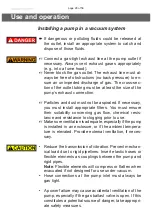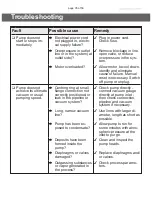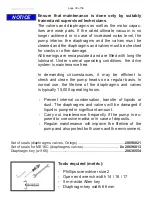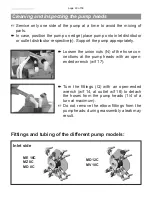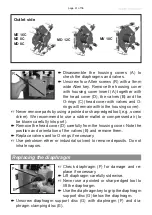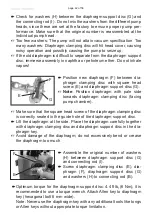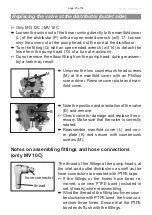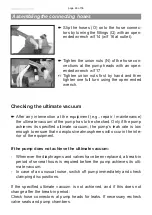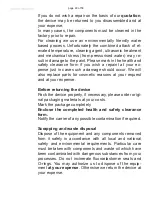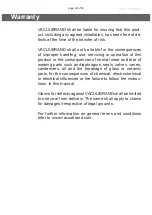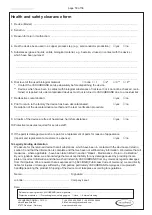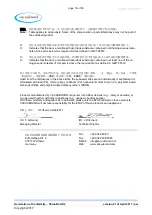
page 42 of 56
➨
Check for washers (H) between the diaphragm support disc (G) and
the connecting rod (I) . Do not mix the washers from the different pump
heads, since these are set at the factory to ensure proper pump per-
formance. Make sure that the original number is reassembled at the
individual pump head.
+
Too few washers: The pump will not attain vacuum specification. Too
many washers: Diaphragm clamping disc will hit head cover, causing
noisy operation and possibly causing the pump to seize up.
+
If the old diaphragm is difficult to separate from the diaphragm support
disc, immerse assembly in naphtha or petroleum ether. Do not inhale
vapors!
➨
Position new diaphragm (F) between dia-
phragm clamping disc with square head
screw (E) and diaphragm support disc (G).
+
Note
: Position diaphragm with pale side
towards diaphragm clamping disc (facing
pump chamber).
+
Make sure that the square head screw of the diaphragm clamping disc
is correctly seated in the guide hole of the diaphragm support disc.
➨
Lift the diaphragm at the side. Place the diaphragm carefully together
with diaphragm clamping disc and diaphragm support disc in the dia-
phragm key.
+
Avoid damage of the diaphragm; do not excessively bend or crease
the diaphragm too much.
E
G
F
➨
Assemble the original number of washers
(H) between diaphragm support disc (G)
and connecting rod (I).
➨
Screw diaphragm clamping disc (E), dia-
phragm (F), diaphragm support disc (G)
and washers (H) to connecting rod (B).
➨
Optimum torque for the diaphragm support disc: 4.4 ft
.
lb
f
(6 Nm), it is
recommended to use a torque wrench. Attach Allen key to diaphragm
key (hexagonal bolt 6 mm wide).
Note: Never use the diaphragm key with any additional tools like tongs
or Allen keys without appropriate torque limitation.
F
E
Summary of Contents for ME 16C
Page 54: ...page 54 of 56...
Page 55: ...page 55 of 56...

